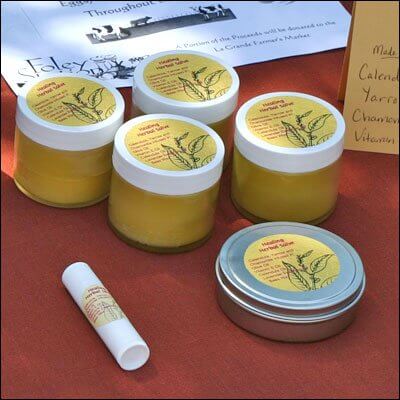The How-To of Using Alternative Grains
As I mentioned in my last Baby Steps post on using alternative grains, there are some differences in cooking and baking using whole grains, and it's important to know exactly how to prepare them and how to substitute them into recipes you usually use.
First of all, for basic whole grain cooking guidelines, see this at-a-glance chart. For more detailed instructions, try this article (you have to move onto the second page to see the instructions).
Keep in mind, though, that all grains should ideally be soaked due to phytate content, and this can be done by adding the necessary water and grain amounts to a pot with a Tbsp or two of an acidic medium (yogurt or kefir, buttermilk, apple cider vinegar, lemon juice), and leave it at least overnight and preferably 12-24 hours, before cooking. This will reduce the need for as much cooking time, so be aware of that. For example, soaked rolled oats will take more like 5-10 minutes, rather than the stated 15. Rice seems to be the major exception to the need for soaking, although a slower cooking time and the addition of bone broth for cooking liquid help with digestion.
When it comes to baking substitutions and alternative flours, it's actually very difficult to find any really solid information, so I have tried to piece together what I know and what I was able to research, and hopefully it will be a helpful resource to you!
In general, spelt and kamut are the easiest flours to substitute, maybe followed by millet, rice and barley. It's nice to play around a bit and find combinations that you really like, but here are some general guidelines to get you going.
Equivalents to 1 cup wheat flour
Amaranth– 1 cup
(But best used in combination with other flours. Use for up to 1/3 or less of the flour called for in the recipe. Any more and it will be very hard and poor tasting).
Barley– 1/2 cup or 3/4 cup
(Opinions vary, so you might need to play around a little. I tend to use 3/4 cup per 1 cup in a recipe, and occasionally I even substitute it 1:1 and it still works out decent, though a bit heavy)
Buckwheat– 1 cup
(Again, use in combination with other flours. Use 1/4 cup, mixed with 3/4 cup regular flour when substituting)
Kamut– 1 cup
(I always substitute it 1:1, though I have also hear that you should use 7/8 cup to 1 cup of wheat flour. This is an easy one to substitute in most recipes)
Millet– 1 cup
(Note that the texture will be quite different- light and more crumbly. I prefer to mix it with other flours in most recipes, though in some it's nice all by itself)
Oat– 1 1/3 cups
(Nicest in combination with other grains, like spelt, kamut or wheat)
Quinoa– 1 cup
(I have never used quinoa flour, but apparently it's a 1:1 substitution! Anyone have experience with it?)
Rye– 1 1/4 cups
(It has such a strong flavor that you will probably want to combine it with other milder flours)
Spelt– 1 cup
(I always use spelt 1:1, and never have any problems with it)
Teff– 7/8 cup
(Again, I have never tried this, so I'm not sure what the results would be like. I think I would likely mix it with other flours).
Here is a great reference for using gluten free flours, where I found a few of the more random ratios that I was unsure of.
For those already using alternative grain flours, do you know of any good references for substituting whole grains in recipes? ? What are your favorite grains and flours to use, and for what types of foods?






This is very helpful! Thank you for this great chart! 🙂
~Melissa
Hi Stephanie,
I recently did a little experimenting with teff. I use it like I do flax in my cooking.
Here is more info:
http://agardenofblessings.blogspot.com/search/label/superfoods
Stephanie,
I’ve enjoyed poking around your site and LOVE your alternative grain info. I’m thankful you’ve done all this research that I had thought I had to do on my own! I’m linking to both your posts on this topic in the next couple weeks at my blog. 🙂
Kelly
I stumbled upon your blog because you’ve used my Suite 101 article as a reference. So first, I want to say thanks! I’ve gotten a few readers because of it! I’m very glad you’ve found it useful.
I wrote that article in a series of emails between myself and several of my friends and families who are struggling with wheat and/or gluten intolerance. Most of my sources are good old fashioned trial and error in kitchens from Atlanta to Ohio, to Ireland and back. (Though the Bob’s Red Mill website is also pretty useful.)
I LOVE using almond meal in sweet breads, cookies and pastry dough, though it’s a 1/2 c. of meal to 1 c. flour, and so it usually can only substitute part of the recipe, or it comes out too wet. Nice sweet nuttiness.
Sorghum is FLUFFY. It’s a little dry, and a pure sorghum flour substitution will come out like a puffed-up rock. It’s best when mixed with something denser, but great for adding a bit of volume!
Potato flour is my go-to for mix-ins and for dumplings. It’s also pretty good in gravies and stews as a thickener when you’re low on cornstarch or arrowroot.
Where do I get or how do I make potato flour?
Can sorgum be used to help make my whole wheat bread raise a little fluffier? I love the whole wheat bread, but want a little fluffier loaf.
Praise the Lord for this site!!! My Hubby and I are trying to eat healthier and have switched to distilled water, home-ground flours and I just got rid of our microwave. Everything tastes better now! Reheated food is not rubbery.
I LOVE your site! It is a lifesaver on a regular basis it seems 🙂
I have cooked with quinoa flour before, and it will cook up like wheat, but it does have the different quinoa taste. I like to mix it 50/50 with another grain just for taste purposes.
Thank you so much for sharing this!
Hi,
When you are talking about “Wheat Flour” do you mean all-purpose refined flour or whole wheat flour?
Thank you